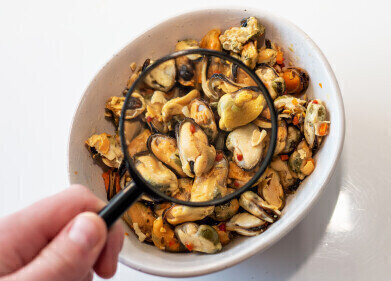GC-MS
Chromatography Investigates PAHs in Smoked & Roasted Meats
Apr 02 2019
One of the most important factors in our health and well-being is our diet. Alongside physical activity and security, our diet is inexorably linked to how healthy we are. It all boils down to just a few essential components. Carbohydrates, fats and proteins in the correct ratio can give us all the energy and molecules we need to live healthy lives - ok, so we need a few more bits and pieces.
But what happens if the food we consume isn’t as healthy as we’d like. Sometimes, if we are not too careful, we could end up potentially causing damage to our bodies just through the way we prepare and cook our healthy food. And one of the main ways we can ‘poison’ our bodies is by eating PAHs in our roasted, smoked and fried food.
What are PAHs and HCAs?
Polycyclic hydrocarbons (PAHs) and heterocyclic amines (HCAs) are chemicals that are made when animal muscle is cooked over very high temperatures - like frying, smoking or roasting. Beef, pork, fish and chicken all produce HCAs and PAHs when cooked. It has been shown in the laboratory that PAHs and HCAs are mutagenic - they can cause changes in DNA that could increase our risk of developing cancer.
PAHs are formed when the juices or fat from meat drip onto the heated surface or naked flames below causing smoke or flames. The smoke or flames produced contains PAHs which can then attach to the meat that is cooking. PAHs are also produced when meat is smoked. HCAs are produced when amino acids or sugars in the meat react at high temperatures. How well you like your steak cooked can influence the concentration of PAHs and HCAs in your meat. If our meat is cooked above 300F or for a long time then it is likely to contain more of the compounds.
Chromatography measures the PAH
Food agencies have to monitor the quantity of PAHs and HCAs that are in cooked meats to ensure we are all kept safe. One of the recommended methods to analyse for PAHs is using gas chromatography mass spectrometry (GC-MS). GC-MS is a used in many different applications from food analysis to environmental analysis - as discussed in this article, Detection of molecular markers in aquatic sediments by ion profiles obtained by GC/MS system.
Although animal studies have shown that PAHs and HCAs can cause cancer in animal models, the animals used in the studies received high doses of the compounds - sometimes thousands of times the quantity a person eating a normal diet would eat. Studies of people in the general population have not shown a definite link between HCA and PAH exposure from cooked meats and cancer. But the recommendations are to avoid exposure of meat to flames and avoid prolonged cooking times.
So be careful when eating from your BBQ this summer.
Digital Edition
Chromatography Today - Buyers' Guide 2022
October 2023
In This Edition Modern & Practical Applications - Accelerating ADC Development with Mass Spectrometry - Implementing High-Resolution Ion Mobility into Peptide Mapping Workflows Chromatogr...
View all digital editions
Events
Apr 23 2024 Kintex, South Korea
Apr 23 2024 Seoul, South Korea
Apr 28 2024 Montreal, Quebec, Canada
May 05 2024 Seville, Spain
May 15 2024 Birmingham, UK














